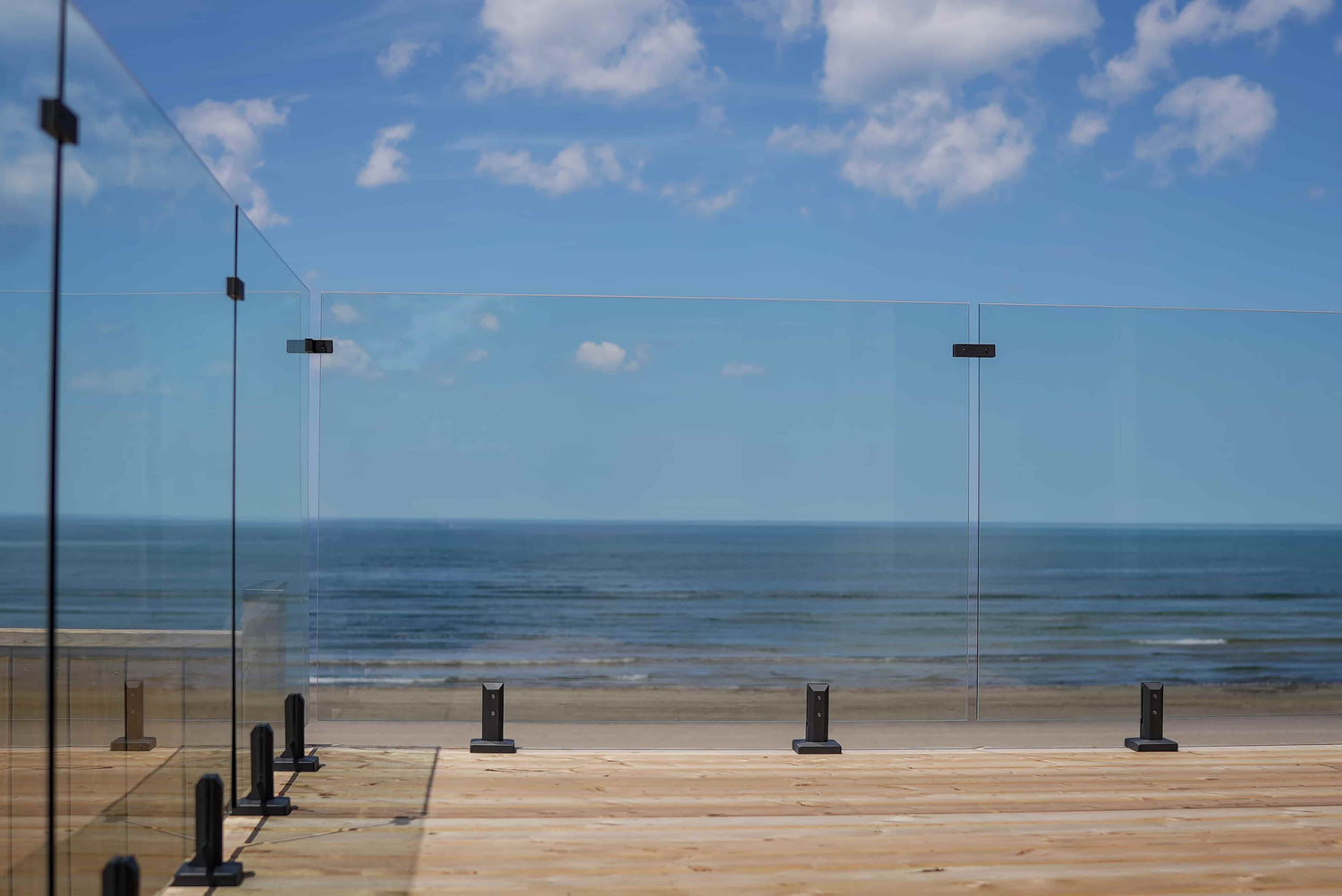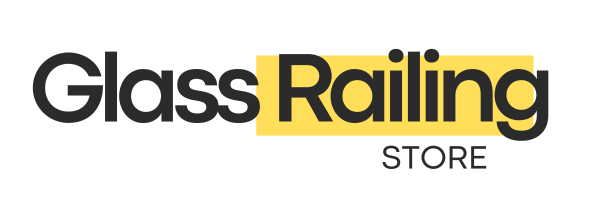Vermont Building Code for Glass Railings

From the rolling hills of the Champlain Valley at 95 feet above sea level to Mount Mansfield's summit at 4,393 feet, Vermont's varied landscape creates unique challenges for glass railing installations. The Green Mountain State's diverse geography spans the Green Mountains, Taconic Mountains, and the Connecticut River Valley, each requiring careful attention to building code compliance and weather conditions.
Vermont operates under a comprehensive statewide building code system, adopting the 2015 International Building Code (IBC) for commercial structures and the 2015 International Residential Code (IRC) for residential buildings. This creates a solid regulatory framework where glass railing installations must meet safety standards across Vermont's terrain, from Burlington's lakefront properties to remote mountain communities in the Northeast Kingdom.
Understanding Vermont's Building Code Framework
Vermont's building code system reflects the state's commitment to safety standards through Title 20, Chapter 189 of Vermont Statutes. The state's adoption of the 2015 IBC and IRC ensures consistent requirements across all jurisdictions, though some municipalities may adopt newer versions or local amendments.
The Vermont Division for Fire Safety oversees building code enforcement while local jurisdictions maintain permitting and inspection authority. Major cities like Burlington, Montpelier, and Rutland follow the state-adopted codes with occasional local amendments, creating regulatory consistency throughout Vermont's diverse regions.
This system benefits glass railing installers by providing clear standards whether projects are in Burlington's urban areas or remote locations in the Green Mountains. The framework ensures equal safety protection for residents across Vermont's varied elevation zones and climate conditions.
Municipal Variations and Local Requirements
Most Vermont municipalities follow state codes closely, but some areas have specific requirements. Burlington, for example, has additional design standards for lakefront properties, while ski resort communities may have enhanced requirements for extreme weather conditions.
When planning glass railing installations, check with local building departments about specific requirements. Most permit applications require detailed drawings showing glass specifications, height measurements, and anchoring methods.

Glass Railing Safety Requirements and Standards
Vermont's glass railing safety requirements center on IBC Section 2407 for commercial applications and IRC provisions for residential installations. All glass railings must use safety glazing meeting either Category I (16 CFR 1201) or Class A (ANSI Z97.1) standards.
Load requirements demand glass railings withstand a 200-pound concentrated load applied at any point and direction, plus a 50-pound per linear foot uniform load applied horizontally along the top rail. These requirements apply statewide, ensuring consistent safety standards from Lake Champlain's shoreline to mountain resort areas.
ASTM E2353 test methods provide the framework for determining strength, impact performance, and post-breakage characteristics of railing systems. Glass components must incorporate a 4x safety factor, meaning allowable stresses equal one-fourth of the material's ultimate strength.
Material Requirements for Vermont Climate
Modern glass railing systems in Vermont typically use laminated glass construction with polyvinyl butyral (PVB) or ethylene vinyl acetate (EVA) interlayers. These materials provide superior post-breakage performance compared to tempered glass alone, particularly important given Vermont's harsh winters and temperature swings.
Professional glass railing systems designed for Vermont's climate often incorporate features that handle freeze-thaw cycles and heavy snow loads common throughout the state.
Height and Dimensional Requirements
Vermont's building codes establish clear height requirements that vary between residential and commercial applications. Commercial buildings require minimum 42-inch guard heights above adjacent walking surfaces, while residential applications under the International Residential Code allow 36-inch heights for individual dwelling units.
Any walking surface more than 30 inches above grade requires guards, including balconies, decks, stairs, and raised patios. Opening restrictions mandate that no opening allow passage of a 4-inch diameter sphere, particularly critical between 2 inches and the guard height.
|
Application Type |
Minimum Height |
Load Requirements |
Glass Type |
Top Rail Rule |
|
Residential (IRC) |
36 inches |
50 lbs./linear foot + 200 lbs. point |
Tempered or laminated |
Required unless laminated |
|
Commercial (IBC) |
42 inches |
Same as residential |
Laminated or tempered |
Usually required |
|
Stairs |
34 inches minimum |
Same as above |
Safety glazing required |
Handrails 34"-38" |
Top rail requirements present important design considerations. Structural glass balusters must include attached top rails unless laminated glass systems are designed to remain intact after breakage through multi-ply laminated panels that pass ASTM E2353 testing.
Special Considerations for Vermont Weather
Vermont's climate requires additional attention to thermal expansion and contraction. Temperature ranges from summer highs in the 80s to winter lows well below zero create stress on glass railing systems. Proper installation techniques must account for these conditions.
Snow loading presents another challenge, particularly in mountain areas where accumulation can exceed 100 inches annually. Quality glass railing installations must consider these loads during the design phase.
Permitting and Inspection Process
Vermont's building code system creates straightforward permitting requirements across most jurisdictions. Most municipalities require permits for new glass railing installations or significant alterations, with local building departments providing specific documentation requirements.
Required documentation typically includes:
Complete building permit applications with project details, detailed construction plans showing glass railing specifications, glass specifications with safety standard certifications, anchoring methods and structural calculations, and code citations demonstrating compliance.
Cities like Burlington, Montpelier, and Brattleboro review these documents and may request stamped engineering drawings for custom installations or systems without top rails. Inspection procedures follow established protocols covering height verification, spacing compliance, material markings, and anchorage quality.
Working with Vermont Building Officials
Vermont building officials generally work cooperatively with contractors and property owners. Early consultation can help identify potential issues and streamline the approval process. Many experienced glass railing professionals maintain good relationships with local building departments throughout the state.
According to the National Association of Home Builders, proper code compliance protects both property owners and contractors from liability issues.
The U.S. Department of Housing and Urban Development emphasizes that building codes serve as minimum safety requirements, and many installations benefit from exceeding these standards.
Material Specifications and Testing
Vermont's climate variations demand careful attention to glass railing material specifications. Temperature ranges from Lake Champlain's moderate conditions to mountain extremes create diverse performance requirements for glass systems. Minimum glass thickness typically requires 3/8-inch or 1/2-inch for residential systems, with commercial applications potentially requiring thicker glass depending on specific applications. All glass must be fully tempered or laminated safety glass tested to meet current standards.
Testing requirements center on ASTM E2353 procedures covering static strength, impact resistance, and post-breakage characteristics. Professional glass railing systems often provide pre-tested components meeting ASTM requirements, simplifying compliance verification for Vermont's installation environments. Permanent marking requirements mandate each glass panel include manufacturer identification, thickness, safety standard compliance, and certification markings. Commercial applications require mandatory markings, while residential projects highly recommend marked glass for easier inspections.
Cold Weather Performance
Vermont's harsh winters require special attention to glass performance in extreme cold. The International Code Council notes that proper glazing systems must account for thermal stress and expansion coefficients. Quality materials and proper installation techniques help ensure glass railing systems perform reliably through Vermont's challenging winter conditions. Research from the American Architectural Manufacturers Association shows that proper glazing system design significantly impacts long-term performance in extreme weather conditions.

Installation Best Practices for Vermont Climate
The topography of Vermont necessitates specific installation methods that take into account variations in elevation and severe weather. Variable wind loads, temperature extremes, and severe snow loading circumstances that are typical throughout the state must all be addressed in installation procedures. Deflection limitations suitable for Vermont conditions are part of the framing system criteria, with special care paid to thermal expansion and snow loading in mountainous regions. For uniform performance across Vermont's climate zones, block criteria are set in accordance with Glass Association of North America (GANA) guidelines.
Weather sealing becomes critical given Vermont's harsh winters and spring thaw conditions. Specialized glass railing suppliers understand these region-specific requirements and provide systems designed for Vermont's unique climate challenges.
Seasonal Installation Considerations
Because of the weather, Vermont's construction season usually lasts from late spring to early October. Installations throughout the winter need extra care and might not be possible in severe weather. It is easier to guarantee correct adhesive and sealant application and curing when projects are planned during periods of favorable weather.
Residential vs Commercial Requirements
The criteria for glass railings in residential and commercial settings are clearly distinguished by Vermont's building code system. The IRC's residential applications give single-family dwellings more leeway, especially in Vermont's diverse residential neighborhoods that range from valley floors to mountain slopes. Commercial applications must adhere to strict IBC regulations, which include complete accessibility compliance and a minimum guard height of 42 inches. Installations all throughout Vermont are impacted by wind load considerations, but exposed sites around Lake Champlain and in mountainous areas require special care.
Take into account Vermont's unique environmental variables, such as elevation effects on wind loads and temperature differences across the state's varied terrain, in addition to code requirements while choosing glass railing components.
Conclusion
While recognizing the particular difficulties brought on by severe winters and a range of elevation zones, Vermont's glass railing building code requirements demonstrate the state's dedication to safety standards through implementation of the 2015 IBC and IRC. Glass railings must survive Vermont's harsh environmental conditions and adhere to uniform safety regulations for both remote mountain towns and lakeside residences in Burlington.
Understanding Vermont's building code system, collaborating with expert design and installation firms that are aware of the climate problems faced by the state, and having thorough documentation proving code compliance are all necessary for success. While experienced glass railing providers offer expertise in overcoming the state's particular weather and geographic problems, property owners and contractors benefit from Vermont's regulatory structure.
Working with experienced professionals ensures your glass railing installation meets all Vermont requirements while providing years of reliable performance through the Green Mountain State's challenging seasons.
Frequently Asked Questions
1. Does Vermont require building permits for glass railing installations?
Yes, most municipalities require permits for new railing installations or major structural changes. Vermont's building code system provides consistent permitting requirements statewide, though local jurisdictions handle the actual permitting process.
2. What type of glass must be used for railings in Vermont?
All glass railings must use safety glazing meeting either Category I (16 CFR 1201) or Class A (ANSI Z97.1) standards. Both tempered and laminated glass are acceptable, though laminated glass often performs better in Vermont's harsh climate conditions.
3. Can I use frameless glass without a top rail in Vermont?
Only with laminated glass engineered to stay in place when broken. Some jurisdictions may still require top rails unless approved by a structural engineer with proper documentation demonstrating compliance.
4. Are there special requirements for Vermont's winter conditions?
While statewide codes apply uniformly, installers must consider Vermont's harsh winters, including heavy snow loads, freeze-thaw cycles, and extreme temperature variations when designing and installing glass railing systems.
5. What load requirements must glass railings meet in Vermont?
Glass railings must withstand 200-pound concentrated loads plus 50-pound per linear foot uniform loads, with a 4x safety factor for glass components. These requirements apply regardless of elevation or location throughout the state.
6. Do I need an engineer for custom glass railing designs?
Custom installations, particularly systems without top rails or installations in extreme mountain conditions, typically require stamped engineering drawings demonstrating compliance with Vermont's safety standards.
7. How does Vermont's elevation affect glass railing requirements?
While basic code requirements remain consistent, elevation affects wind loads, temperature variations, and snow loading. Mountain installations require appropriate design considerations for these challenging conditions.
8. What thickness of glass is required in Vermont?
There's no universal thickness requirement, but most residential systems use 3/8-inch or 1/2-inch glass, with commercial systems potentially requiring thicker glass based on specific applications and environmental conditions.
Let customers speak for us

Glass Railing Near You
Discover how The Glass Railing Store has been delivering exceptional service to our customers, thanks to our dedicated and knowledgeable team and their love our glass railing products.







